Use fresh, stone-ground grits when possible
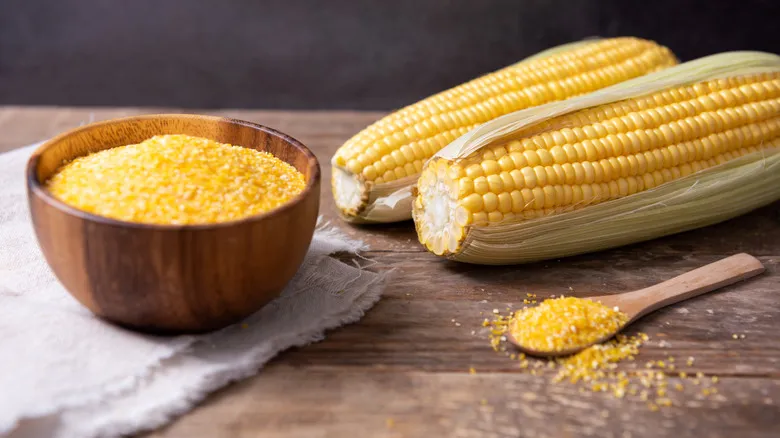
Instant grits, much like the leading brands of instant ramen and various soups, are quick and convenient to prepare, but they fall short in flavor compared to the authentic version. "I'll be honest with you... steer clear of instant grits," advised Serge Krikorian of Vibrant Occasions Catering. "I understand they're easy to use, but they simply don't compare to the real dish. It's akin to comparing instant coffee to a freshly brewed cup."
Instead, he highly recommends stone-ground grits. "If you want to create genuine Southern grits, stone-ground is the only option. I've been cooking with them for years, and there's no match for the mass-produced varieties. The flavor is richer and more corn-forward — that's because they retain all those natural oils and bits of corn kernel," Krikorian explained, noting that he prefers locally sourced grits. "I typically buy mine from a small mill in Arkansas, but you can find quality stone-ground grits at better grocery stores or farmers' markets. Heirloom varieties are also excellent if you can find them."
Take note of what great grits should look like

Realistically, you can't accurately assess the quality and freshness of grits just by examining the sealed bags they come in. However, with a bit of research before you shop, you can increase your chances of selecting a good batch. "Here's what I advise my new chefs: First, check the milling date," says chef Serge Krikorian. "Fresh is best, and I aim to use mine within a few months of milling."
Additionally, don't expect stone-ground grits to have the fine, uniform appearance of instant grits. "The color should be a natural cream or light yellow, not bright white. You should see some texture, perhaps even flecks of the corn hull," Krikorian explains.
Kyle Swarzendruber from Soby's New South Cuisine concurs. "When I'm shopping for grits, I always seek out coarse ground varieties. They offer a texture and a rich corn flavor that you won't find in other types," he notes. If possible, the smell test can also indicate the quality of the grits. "Good grits should have a fresh, slightly nutty aroma. If they smell musty or off, it's best to pass," Krikorian advises.
Give yourself enough time to cook your grits
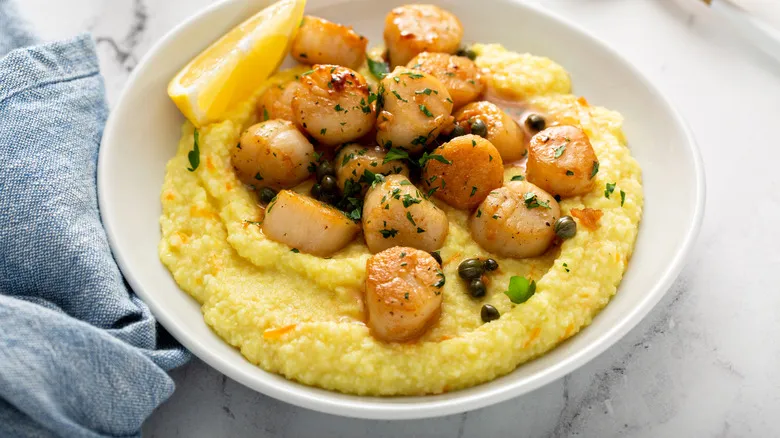
The primary benefit of instant grits compared to traditional ones is their quick cooking time. However, true Southern grits require a longer preparation, and for enthusiasts, the additional time and effort are definitely worthwhile. This means that if you desire fresh grits for breakfast, you'll need to rise an hour earlier than normal.
Unfortunately, increasing the heat won't expedite the cooking process. "The key is for the grits to absorb the moisture, and if you boil them, they will lose moisture and become thicker than intended," explained executive chef Kyle Swarzendruber. "For stone-ground grits, it's best to plan ahead, as they can take up to an hour to prepare depending on the quantity." Chef Serge Krikorian concurs that the secret to exceptional grits lies in patience. He encourages cooks to use low heat and have faith in the process. "Don't rush it! Good grits are worth the wait," he advised.
Use enough cooking liquid
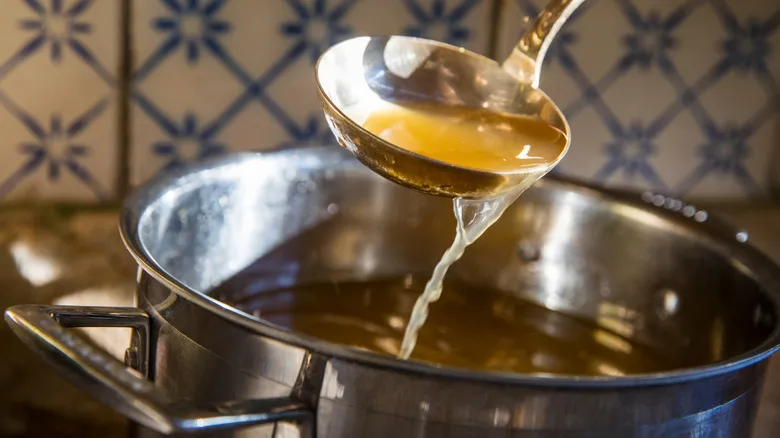
Preparing grits is essentially similar to making traditional steel-cut oats or any grain-based porridge. It involves simply combining the dry meal with simmering water and allowing it to absorb the liquid and soften. However, be cautious: when cooking grits the traditional way, you might need significantly more water than you expect. Grits absorb a considerable amount of water during cooking, and combined with steam evaporation, this can lead to a very thick mixture long before they reach the desired tenderness.
A common water-to-grits ratio recommended by our experts is four parts liquid to one part grits, although some cooks prefer a five-to-one ratio for a creamier texture. If you enjoy your grits a bit runnier, this might be a suitable choice. Remember to season your cooking liquid with salt and bring it to a boil before adding the grits. Once the grits are in, allow them to cook undisturbed. If they turn out thicker than you prefer, you can stir in additional liquid. Conversely, if they are too thin, continue cooking them uncovered to let some of the excess liquid evaporate.
For smooth grits, stir frequently
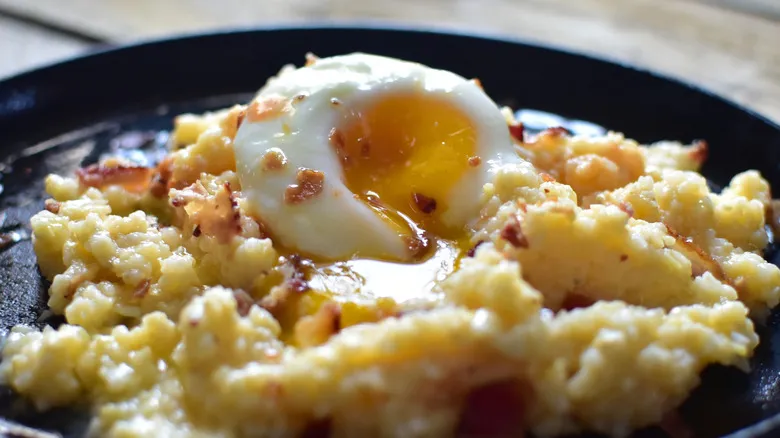
Dedicated enthusiasts of Italian cuisine understand that preparing polenta is a true labor of love. This unassuming cornmeal dish, typically served as a hearty side to rich, saucy beef stews like the unique carbonade valdostana, demands a lengthy cooking process and attentive stirring to avoid lumps and burning. Similarly, while grits may not boast the same culinary prestige as polenta, they also require careful preparation.
In essence, if you're making grits in the traditional Southern style, be prepared to stay near the stove. "I stir them every 5 to 10 minutes to ensure nothing sticks to the bottom," chef Serge Krikorian shared. He also prefers to maintain a relatively low cooking temperature, which helps prevent scorching. Additionally, Kyle Swarzendruber recommends keeping the pot covered between stirring intervals to prevent a skin from forming on the surface of the grits and to minimize splatters from bubbling as they cook.
Slowly add grits to water to prevent clumping
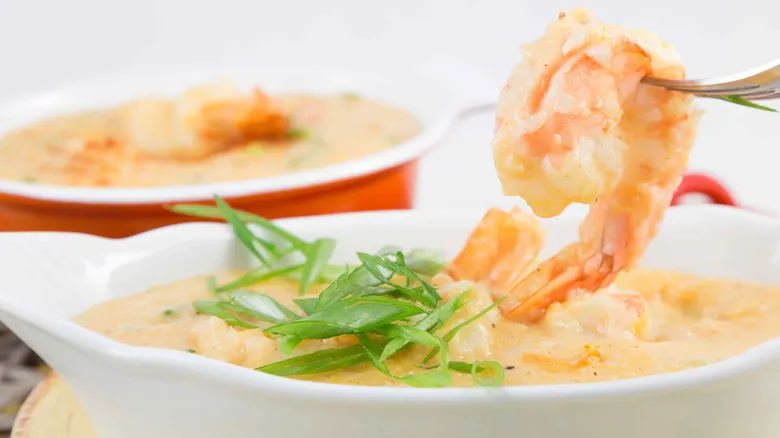
One of the main challenges you'll encounter when preparing grits is the potential for lumps. While both cooks and diners may have varying opinions on the ideal consistency of grits—whether thick or thin—nobody appreciates lumpy grits. Unfortunately, grits tend to clump together into hard, unappealing pieces during cooking, which is why it's crucial to stir them frequently and thoroughly.
To prevent lumps from forming right from the start, it's important to be careful when adding dry grits to your pot. "This is where many people go wrong; they pour them all in at once and end up with lumps," explains Serge Krikorian. Instead, he suggests gradually adding dry grits to boiling water while whisking each addition thoroughly before adding more. Once all the grits are in, continue whisking for a few minutes—this will help ensure that your grits start off smooth and without any drama.
Include a touch of dairy or broth to make your grits tastier
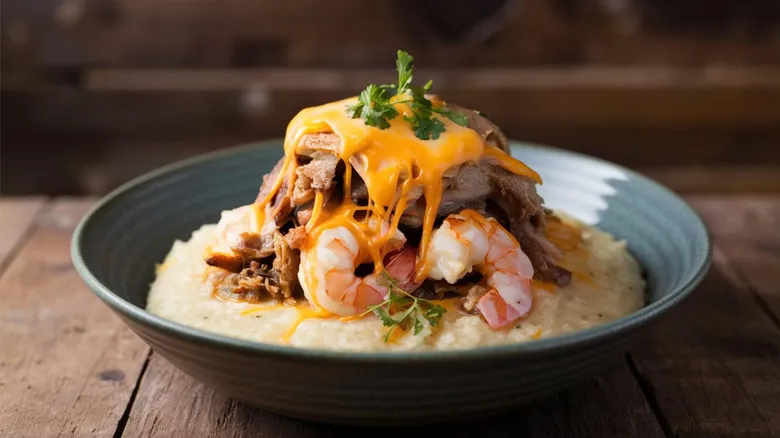
At their core, grits are simply ground corn, water, and maybe a pinch of salt. (And just so you know, it's a Southern tradition to avoid sweetening grits—at least if you want to avoid upsetting some fellow Southerners.) If you intend to use grits as a foundation for a dish with bold flavors, a lightly seasoned version like this can help those stronger tastes stand out. "When I use them as a base for something like shrimp and grits, I keep them fairly neutral so they can absorb the sauce," says culinary director John Spotkill of South City Kitchen.
However, many chefs, including Spotkill, prefer to enrich their grits by incorporating milk, cream, or broth into the cooking liquid. Spotkill's preferred ratio is one part cream to four parts water. Kyle Swarzendruber opts for a more savory approach, using three parts stock to one part cream. Serge Krikorian adjusts his mixture based on the dish he's preparing. "Typically, I use half water and half whole milk, but sometimes I add chicken stock for an extra flavor boost," he explains. And, of course, cheese is a classic addition to cooked grits—Spotkill enjoys using smoked gouda for a contemporary and flavorful twist.
Pre-soak stone-ground grits to speed up cooking

Like many classic dishes, stone-ground grits demand patience due to their lengthy cooking time to reach the perfect tenderness. If you want to savor that authentic flavor at home, you must commit to the traditional effort—there are no shortcuts for a slow, low cook and plenty of careful stirring.
However, just as soaking dried beans can reduce their cooking time, you can give your grits a head start by soaking them in water the night before you intend to cook. This pre-soaking will soften them by the time they enter the pot, allowing them to cook not only more quickly but also creamier. While you'll still need to be attentive and patient during the cooking process, your grits can be ready in as little as 20 to 30 minutes instead of an hour. If you forget to soak them overnight, you can still prepare them quickly: simply cover the grits with water, bring it to a boil, then remove the pot from heat and let it sit covered for 20 minutes to an hour. After that, continue cooking them as you normally would.
When reheating leftover grits, add more liquid
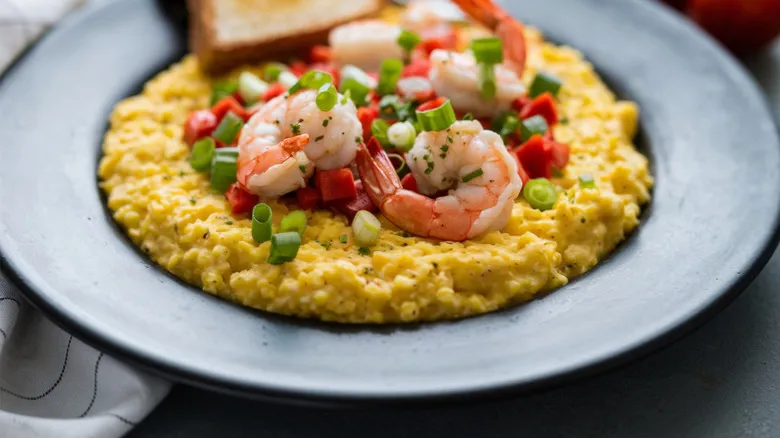
If you're planning to prepare traditional stone-ground grits, you might as well make a large batch—after all, the effort required for two servings is nearly the same as for ten, and having extra on hand for future meals can save you time. They are simple to store and reheat easily, which is a bonus for busy cooks.
Storing leftover grits is just as straightforward as you would expect. "Let the grits cool completely, then cover and place them in an airtight container," advises John Spotkill. They will remain fresh in the refrigerator for three to four days, or even longer if frozen. When you take them out later, you may notice they've solidified into a block, but don't worry—this is perfectly normal.
To reheat, simply add a bit of liquid to soften them again. "For reheating, bring water and a small amount of cream to a boil. Gradually whisk in the leftover grits until they are heated through and creamy," Spotkill explains. "You might need to add more hot water to achieve the desired consistency." Depending on the flavor you want, you can also use other liquids for cooking—Kyle Swarzendruber prefers to reheat his grits with a splash of broth.
Try frying leftover grits for a crispy treat
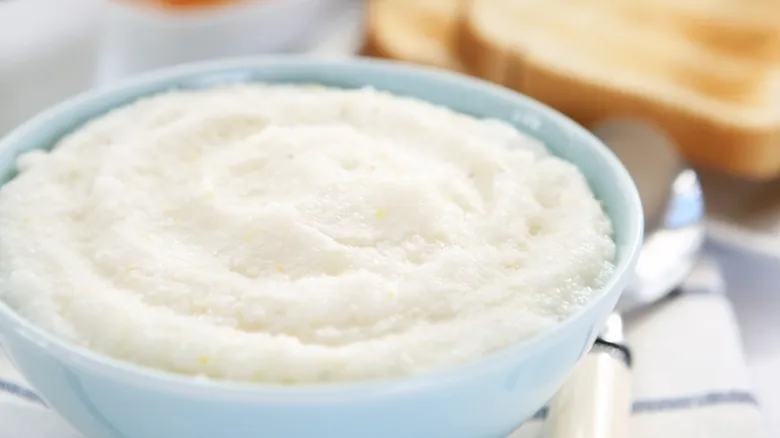
If you're feeling peckish but a bit sluggish, a cold, hard block of leftover grits can be quite disheartening. While reheating them is certainly easier than making them from scratch, it still requires some effort—you'll need to stir carefully to bring back their original creaminess.
If that sounds too tedious, there's a fun alternative: Embrace the firm texture of cold grits instead. "Here's a neat trick: Take your leftover grits, spread them in a pan, let them set overnight, then cut them into squares and fry them up," suggests Serge Krikorian. "You'll end up with the most delicious crispy grit cakes!"
At his restaurants, John Spotkill and his team prepare extra-thick grits that are perfect for frying. "One unique dish we offer at South City Kitchen is fried grit croutons for garnishing Caesar salads," he explains. "We use slightly less liquid, finish with parmesan cheese and butter, and spread the mixture evenly on a sheet pan. After cooling, we cut it into squares, bread them, and fry until crispy."
Don't expect stone-ground grits to be completely smooth

Interestingly, grits didn't receive their name due to their gritty texture; rather, the term is derived from "grist," an old word referring to any type of ground grain. However, the traditional stone-ground grits cherished by Southern chefs and diners are indeed coarse and designed to retain some texture even when fully cooked. If you're new to grits, don't expect the stone-ground varieties to have the same uniform appearance as regular cornmeal.
Additionally, don't anticipate them to transform into a perfectly smooth mixture like instant mashed potatoes. While you certainly want to avoid clumping, you should expect to see some distinct pieces of ground grain in the finished grits. As you cook, you might notice that some of the larger bits remain stubbornly firm even when most of the pot appears ready to serve. Seasoned cooks understand that this is perfectly normal—just keep cooking. They will soften in due time, and as long as you stir regularly to prevent sticking to the bottom of the pot (and add more liquid if they become too thick), the rest will turn out well—extra cooking will only make them creamier.
Try a non-traditional twist on grits

In the South, grits are commonly enjoyed as a starchy accompaniment to various dishes, such as breakfast eggs or hearty mains like scallops and country ham. Adding a sprinkle of shredded cheese to cooked grits transforms them into a delicious side for any meal.
However, like other cooked grains, grits can also be a versatile base for culinary creativity. While our experts honor traditional Southern cuisine, they are also eager to explore innovative uses for grits. For example, Serge Krikorian draws inspiration from polenta for one of his favorite preparations. "My current favorite is a fusion of Italian and Southern comfort food. I serve them with homemade meatballs and marinara. It may sound unusual, but trust me, it works!" he shared.
Although shrimp and grits remain a classic favorite, our experts enjoy experimenting with new flavors. "One of my favorite sauces, which is currently on our menu, is a tarragon and tomato cream," Kyle Swarzendruber mentioned. Krikorian has also come up with a unique way to present this beloved dish. "I have to tell you about one of our most popular catering items — our Cajun Shrimp & Cheese Grits shooters. We serve them in elegant little shot glasses at events, with creamy cheese grits on the bottom and perfectly seasoned Cajun shrimp on top," he explained.
Recommended
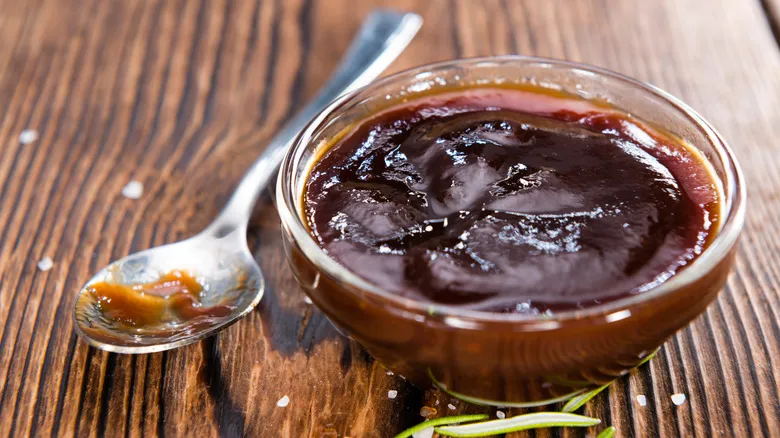
The Japanese Barbecue Sauce Brand That's Worth The Hype

The Best Way To Eat Salt Cured Egg Yolks
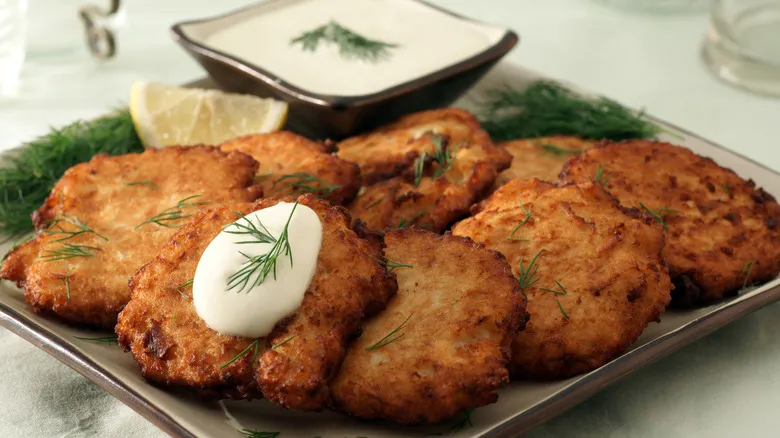
One Pantry Staple Gives Your Latkes A Major Flavor Boost
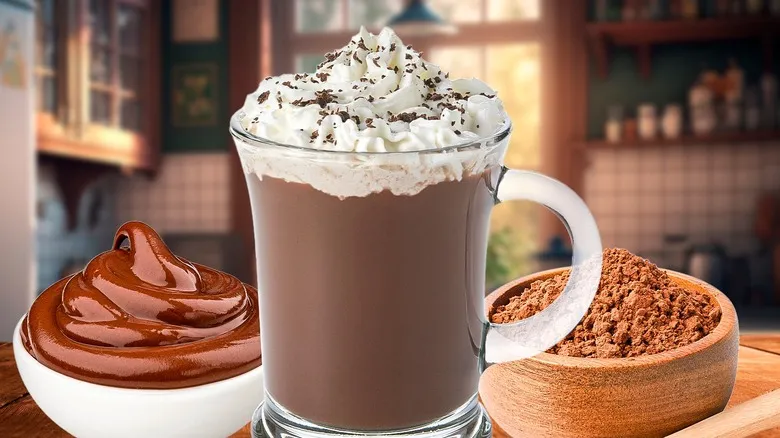
10 Genius Hacks For Restaurant-Quality Hot Chocolate
Next up

